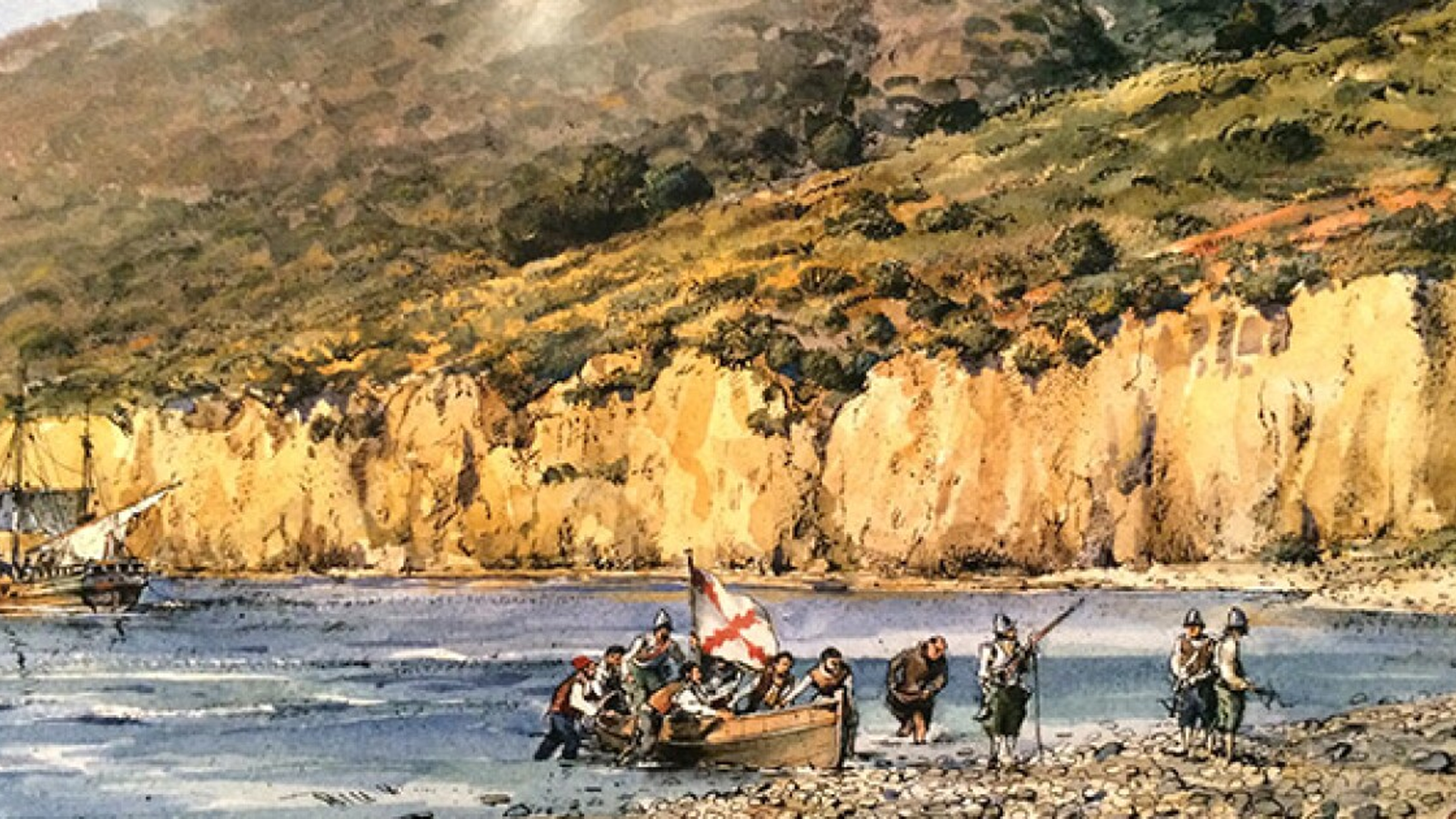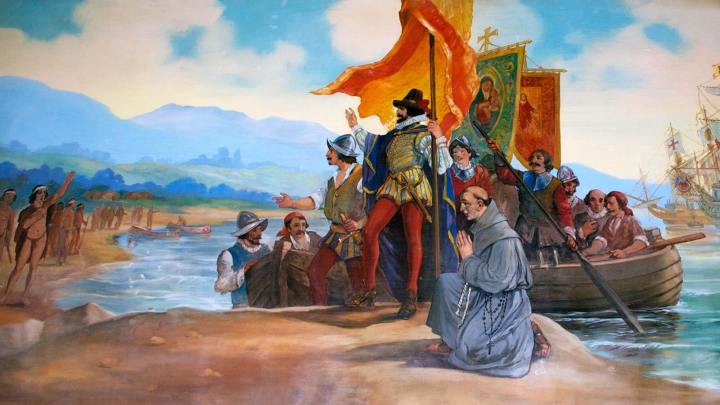Cabrillo Sails into San Diego Bay

Painting of Juan Rodriguez Cabrillo’s ships anchored in San Diego Bay.
What Happened?
When Juan Rodriguez Cabrillo sailed north from Mexico in 1542, his mission was to find the Strait of Anian, a legendary water route that supposedly cut across North America. Like many explorers of his time, Cabrillo believed this passage would be the key to faster trade with Asia. It was a dream born of European ambition, but it collided with the reality of an enormous continent that no map yet fully captured.
After three months at sea, Cabrillo’s ships entered a sheltered harbor on September 28, 1542. He described it as a 'very good enclosed port.' Today, we call it San Diego Bay. Cabrillo and his crew were the first Europeans known to set foot in this part of the world, though the Kumeyaay people had lived on the land for thousands of years before him.
Cabrillo’s voyage gave Europe its first recorded glimpse of California’s coast. From San Diego, his expedition continued north, charting bays and inlets as far as present-day Monterey and possibly even Oregon. Yet, in their hunt for the Strait of Anian, they missed San Francisco Bay entirely—a reminder of how difficult exploration could be without accurate maps or modern tools.
The contact between Cabrillo’s crew and Indigenous communities was brief but significant. The Kumeyaay and other tribes had their own ways of life shaped by the land and sea. Cabrillo’s arrival marked the beginning of European intrusion into these worlds, though lasting Spanish colonization of the region wouldn’t come until over 200 years later.
Cabrillo himself would not live to see the end of the journey. After an injury on the Channel Islands, he died in January 1543. His crew pressed on but were battered by storms and forced to return to Mexico. To his contemporaries, the expedition seemed like a failure: the Strait of Anian remained undiscovered, and no new wealth was found.
Yet history judges Cabrillo’s voyage differently. His maps and notes became the foundation for future explorers who would navigate the Pacific coast. He proved that California’s coast could be sailed, and he recorded important details about winds and currents that shaped future trade routes.
Cabrillo’s story is also a window into the darker realities of exploration. Before this voyage, he had made his fortune through the encomienda system in Guatemala, where Indigenous people were forced into labor on his farms, mines, and shipyards. His wealth and power were built on conquest and exploitation—just like many conquistadors of his era.
The arrival at San Diego Bay is remembered today at Cabrillo National Monument. It marks both the first European landing in California and the beginning of a long, complicated history between Indigenous Californians and European colonizers. It reminds us that exploration often brought discovery for some, but disruption and loss for others.
The search for shortcuts like the Strait of Anian never succeeded, but centuries later explorers did find a way through the icy Arctic. By then, the dream of a quick passage to Asia had been replaced by new global empires, and Cabrillo’s name had already been etched into the history of California.
Why It Matters
Cabrillo’s landing in San Diego Bay in 1542 symbolized the collision of two worlds—Indigenous California and European colonization. While his immediate mission failed, his voyage provided Europe with its first maps of the Pacific coast, setting the stage for future exploration and conquest. For the Kumeyaay and other tribes, it marked the start of centuries of change, conflict, and survival. Remembering this moment helps us understand how global ambitions reshaped local histories.
?
Why were European explorers so determined to find a shortcut to Asia?
What might the Kumeyaay people have thought when Cabrillo’s ships arrived in their homeland?
How did Cabrillo’s maps and notes influence later exploration of California?
Why do you think Cabrillo’s expedition was seen as a failure at the time but important today?
How should we remember explorers whose discoveries were built on systems of conquest and forced labor?
Dig Deeper
The first known European to reach the gorgeous coasts of California was Juan Rodriguez Cabrillo in 1542. Cabrillo’s expedition had been launched from modern-day Mexico, known then as the Viceroyalty of New Spain, and ended up in San Diego Bay. The expedition was rather fruitless, however, as Cabrillo failed to discover anything that he viewed as worth the trouble for Spain to colonize.
Related

Indigenous Nations Before European Contact
Long before Columbus, Indigenous nations flourished across North America. From hunters following mammoths to farmers building vast trade networks, Native peoples shaped the land—and the land shaped them.

European Exploration of the Americas
When European explorers set sail across the Atlantic, they weren’t just chasing trade routes—they were rewriting the world’s future. But discovery for some meant devastation for others.

English Colonization: Roanoke, Jamestown, and Early Settlements
From vanished colonies and tobacco empires to pirates and indigenous resistance, the story of England’s first attempts at colonization in North America is anything but boring.
Further Reading
Stay curious!
